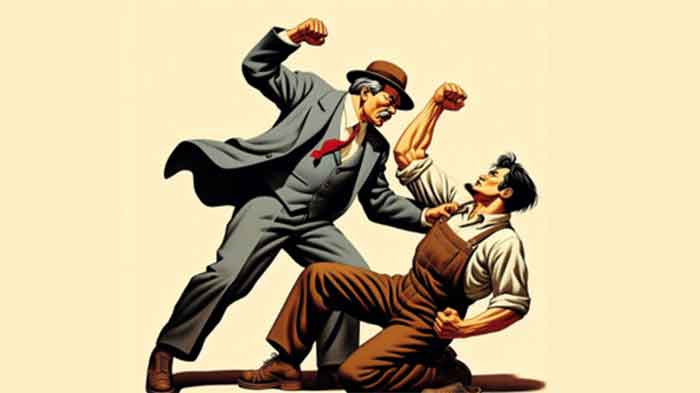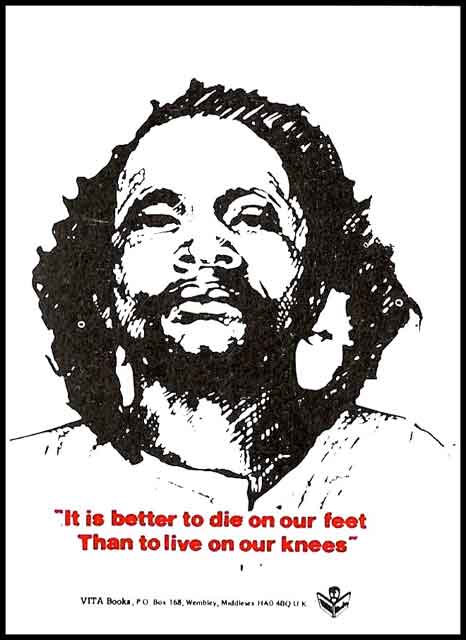
Are you sad because a bout of Covid-19 disrupted your life with illness, bills, or even the death of a friend or family member? Are you anxious because your benefits have ceased and you can’t find a new job? Are you worried because the brain fog after Covid has persisted so long? Are you angry because you are being evicted or are short of food? Maybe you are one of the statistics being counted in the supposed wave of the mentally ill? After having Covid, people were 55% more likely to be on antidepressants and 65% more likely to be on antidepressants than uninfected contemporaries (NYT 2/16/22).
We will argue that the new stressor of Covid is only another one added to those that capitalism already provides: poverty, racism, poor social services, sexism, police violence. High quality housing, education, health care, recreation and a healthy environment are difficult to attain and maintain even for middle and modestly high-income workers. In addition, we now live in a world in which we are witnessing the imminence of climate disaster, the rising risk of nuclear war, the increased frequency of pandemics, and the worsening of inflation causing desperation among millions. We urgently need to prepare to change this system. Let us begin by examining the ways in which the powerful in our society try explain away its deficiencies by blaming them on deficiencies within us, within our bodies and minds.
On September 20th, the NY Times published an editorial about the so-called Covid mental health crisis. As author Danielle Carr states: ”A crisis that affects mental health is not the same thing as a crisis of mental health.” She points out that the medicalization of social phenomena (or the more general term denoting biology as the cause, biodeterminism) tries to blame the individual and their biology to declare them ill – for negative reactions to stressful circumstances. Instead, depression, anger, and anxiety are normal responses to illness and death, job loss, poverty, violence and other stressors that have worsened during this pandemic. Moreover, those who have suffered the worst consequences of these disruptions are the poor, disproportionately black, Latin, Native American or immigrant. And who profits from all this “mental illness?” The drug companies, of course, and capitalism as a whole, that is not held responsible for the problems it causes or for finding remedies.
Racist Biodeterminism is an Old Story
The medicalization of behavior that is not pleasing to those in power is nothing new. In the 1850s, Louisiana physician Samuel Cartwright described a disease he called “drapetomania” that caused slaves to run away from their masters. The cure was a good whipping.1 In the first half of the 20th century, American eugenicists proposed that poverty, feeblemindedness, and crime were genetic, and on the basis of this “science,” sterilization laws and immigration quotas were imposed.2 The Nazis based their murder of millions -the mentally retarded, those convicted of crimes, Jews and non-Aryans, among others – on these US- born theories.
The exposure of the horrors committed by the Nazis did not, however, quiet the voices of racist biodeterminism in the US. During the 1960s and 70s, in the wake of urban riots, law enforcement partnered with the National Institute of Mental Health (NIMH) to identify methods of behavior control in order to “combat crime” and “reduce violence.” Drs. Vernon Mark, Frank Mervin and William Sweet of the prestigious Massachusetts General Hospital proposed that urban rebellions were caused by brain damage and could be cured by surgery on the brain, psychosurgery. They received almost one million dollars in federal funding until public protest ended their “research.”3 Richard Herrnstein, a widely read Harvard professor, wrote that “unemployment runs in the genes just like bad teeth” and co-authored The Bell Curve, in which he asserted that blacks were genetically less intelligent than whites. With a colleague, James Q. Wilson, he published Crime and Human Nature, which stated that criminal behavior was a result of internal dynamics of the criminal, not influenced by society in which he lived.
In the 1990s, the NIMH and the Center for Disease Control (CDC) received major funding to study the biological causes of criminal behavior.4 The so-called “Violence Initiative” was supported by billion dollar federal grants, private foundations and the pharmaceutical industry. Frederick Goodwin, soon to be the Director of NIMH, compared inner city youth to jungle animals:
“Now, one could say that if some of the loss of social structure in this society, and particularly within the high impact inner city areas, has removed some of the civilizing evolutionary things that we have built up and that maybe it isn’t just the careless use of the word when people call certain areas of certain cities jungles, that we may have gone back to what might be more natural, without all of the social controls that we have imposed upon ourselves as a civilization over thousands of years in our own evolution.”5
New York City was a major focus of Violence Initiative research, centered at the child psychiatry departments of Columbia University and Mt Sinai Hospital. The researchers postulated that abnormal levels of one neural hormone, serotonin, were responsible for violent behavior. Their study subjects were the younger brothers, ages 6-10, of boys known to the criminal justice system. No white boys were included as, not surprisingly, there weren’t enough white children who had been arrested. Of course, no police or soldiers or politicians were studied for violent tendencies. The young subjects were then injected with fenfluramine, a substance known to be potentially harmful, in order to stimulate serotonin release.6
These experiments were not only racially biased, they were nonsensical. The children had no violent history, nor is there any way to connect levels of a single brain chemical to complex behavior patterns. There were no control groups or efforts to assess the environment, stressors, racism or discriminatory policing to which the older brothers were subject that got them in trouble with the law. Then, when the researchers found results opposite to what they postulated, they just declared that serotonin must act differently in children than adults. Protests by students, community members and professionals, primarily in New York City and at the American Public Health Association, as well as the lack of commercial potential, ended this movement.
The Overdiagnosis and Overtreatment of Our Unhappiness
The next movement to name children’s behavior as a mental illness and promote medications as the cure came about later that decade. NIMH, many professional mental health organizations and the June,1999 White House conference on mental health estimated that eight million out of 50 million US children are mentally ill during some part of their childhood.7 The most common diagnoses were Attention Deficit Hyperactivity Disorder (ADHD), Oppositional Defiant Disorder (ODD), and Conduct Disorder (CD), manifest by lying. Of course, the treatment for a medical problem is medications. In some parts of the country up to 10% of children were on drugs for ADHD; thousands were on Prozac.8
From 2005-9, the prescribing of antipsychotic drugs increased rapidly among children. 31% of youth visits to psychiatrists resulted in such prescriptions, most commonly for disruptive behavior disorders, but also for depression and bipolar disorder.9 It is good that antipsychotic prescribing for children with private health insurance decreased between 2007 and 2017 from .27% to .17% and that developmental delay came to outpace behavior disorders and ADHD.10 However, among children on Medicaid, which means children who are poor and disproportionately of color, the rates were over twice as high and ten times higher in children in foster care. Despite the multiple traumas that the foster children had endured, severe enough to render them subject to psychiatric medicalization, over one third were receiving no psychosocial mental health support.11
Profits from Psychiatry
As we would expect, the pharmaceutical companies were a heavy promoter of the use of psychiatric medications. By 2006, the drug industry supplied 30% of the financial support for the American Psychiatric Association. They ran drug ads in psychiatry journals, exhibits at the annual conference and sponsored fellowships, conferences and industry symposia (NYT, 7/12/08). More recently, it has been documented that in 2016–2017, pharmaceutical manufacturers provided 812,877 payments worth $110,512,607 to 56% of psychiatrists in the US.12 Even the National Alliance for Mental Illness (NAMI), a support group for families of the mentally ill, was 75% funded by the drug companies as of 2009 (NYT 10/21/2009).
Although it has been shown that talk therapy is 3-4 times better than medication for common depression and anxiety, medication is the most frequent treatment.13 Of course such articles do not even consider the need or efficacy for remedying the social circumstances which have contributed to the patient’s symptoms. To quote the Guardian, after noting that the number of prescriptions for antidepressants in England doubles from 2008-2018,
“Things that are better seen as a part of normal human life – the ramifications of choices we have made, our personal shortcomings, losses, bereavements, disappointments, unfairnesses, human frailties – are pathologised, and these experiences are then conceptualised as illnesses ….The World Health Organization says that depression has become the “leading cause of disability worldwide”, and that it remain ‘on the rise globally.’”14
In the US, the number of outpatient mental health service users increased almost 20% within a decade and an estimated one in six adults are on psychiatric drugs at some point per year.15
Poverty and Racism Cause Mental Distress
There is no doubt that a society dedicated to maximizing profits as opposed to human welfare causes dismay of many types for those who are not owners of industry. However, for the poor and people of color, the stressors are much greater. As discussed by David R. Williams, Professor of Public Health, African and African American Studies and Sociology at Harvard University,
“The dominant group devalues, disempowers, and differentially allocates desirable societal opportunities and resources to racial groups categorized as inferior ….34% of American Indians, 23% of blacks, 19% of Hispanics, and 11% of Asians and non-Hispanic whites reported that they experienced everyday discrimination almost every day or at least once a week.”16
It is now well established, Williams goes on to say, that discrimination leads to depression, anxiety and other psychological distress in adults and children, as well as increased rates of physical illness. This has been found to be true in South Africa and the United Kingdom as well. Even stressors such as grief at the death of a loved one are affected by race, since life expectancy is lower for black adults are more than twice as likely to lose a child by age 30, and a spouse by age 60. There is also a 10-fold higher incidence of incarceration for US blacks as whites, the result and the cause of much social stress as well as the much higher susceptibility to violent policing.
Around the world, stress has similar results. In India, a high rate of farmer suicide in recent decades has been linked to indebtedness, inability to sell crops and crop failures, endured without any government support.17. Indeed, such were the reasons behind the massive farmer strikes last year.
Alleviating stressful conditions also has results. A study by the Brookings Institution showed that violence in poor black neighborhoods was decreased by renovating housing, clearing vacant lots, increasing lighting, transportation and parks, youth workforce development, and building ties with nearby better-off neighborhoods.18
In Conclusion
With the risk of some over-simplification, we must note the rapid rise in the diagnosis of depression and anxiety, the treatment of said illnesses with medication, and the profiteering of the psychiatric drug producers and prescribers coincides with the lack of attention to social causes of distress. It is only human and appropriate to feel sad in the face of death or loss, anxious when we cannot provide for our own or our loved ones’ basic needs, or angry when we see discrimination and injustice.
In fact, it is a good thing when we harness that anger and fight back against the sources of our oppression. Even violence can be a good thing when we use it in a conscious and organized way to overturn racism or fascism. Since all of us face the dangers and deprivations of a crisis-ridden capitalist society, although to different degrees, we must unite together in order to effect change. In particular, we must resist racism, nationalism and sexism, by which we are divided and which bring added stress and distress to their victims.
One of the many mechanisms by which we are deceived about the origin of our problems, in addition to miseducation by politicians, schools, and the media is the increasing movement to blame our brains. This does not mean that we cannot seek out counseling to deal with a particular problem, but that we should also look to involvement with our community to fight back against conditions which contribute to our distress. Indeed, this involvement is a powerful way to help dispel feelings of sadness, impotence and isolation. We should always question very carefully any advice to take psychiatric medication as a first or only line of action.
Ultimately, we must consider the need to do away with capitalism, that system of money first and people second, that destroys so much of human potential and happiness. As we oppose our individual or group hurdles, let us also consider that perspective and build towards a larger movement to that end.
Ellen Isaacs is a physician, anti-racist and anti-capitalist organizer and co-editor of multiracialunity.org. She can be reached at [email protected]
References
- https://calendar.eji.org/racial-injustice/mar/17
- https://www.newyorker.com/books/page-turner/the-forgotten-lessons-of-the-american-eugenics-movement
3.https://jamanetwork.com/journals/jamaneurology/article-abstract/572615
- https://www.nytimes.com/1992/09/18/opinion/l-us-hasn-t-given-up-linking-genes-to-crime-153192.html
- Frederick Goodwin, address to the American Psychiatric Association, Washington D.C., may 5, 1992
- Pine, Arch Gen Psychiatry, 1197 Sep;54(9)839-46
7.https://clintonwhitehouse4.archives.gov/WH/EOP/First_Lady/html/generalspeeches/1999/19990607.html
- Breggin, Peter, The War Against Children ,St Martin’s Press, 1994
9.https://jamanetwork.com/journals/jamapsychiatry/article-abstract/1263977
11.https://www.healthaffairs.org/doi/10.1377/hlthaff.2016.0064
12.https://www.ncbi.nlm.nih.gov/pmc/articles/PMC7260092/
13.https://www.ncbi.nlm.nih.gov/pmc/articles/PMC7451317/
14.https://www.theguardian.com/commentisfree/2019/jun/24/medicalising-mental-health-ilnness-nhs
15.https://www.frontiersin.org/articles/10.3389/fpsyt.2021.645556/full
- https://www.ncbi.nlm.nih.gov/pmc/articles/PMC6532404/
- https://timesofindia.indiatimes.com/readersblog/hail-to- feminism/farmers-suicides-an-issue-of-great-concern-27472/
- https://www.brookings.edu/research/want-to-reduce-violence-invest-in-place/#:~:text=The%20most%20consistent%20evidence%20on%20the%20relationship%20between,disinvested%20communities%20significantly%20reduces%20violent%20crime%20rates.%20














































